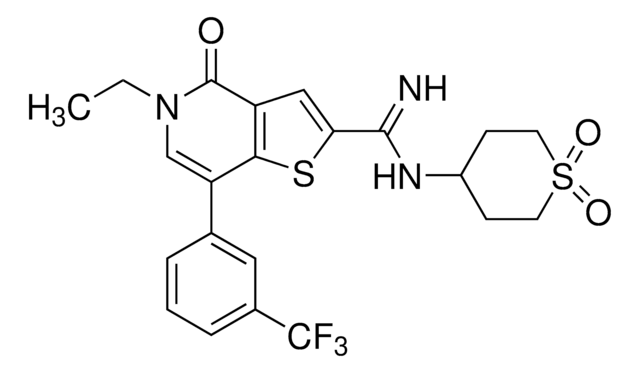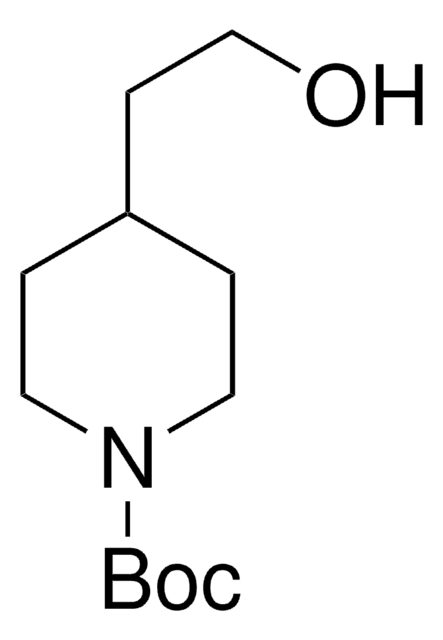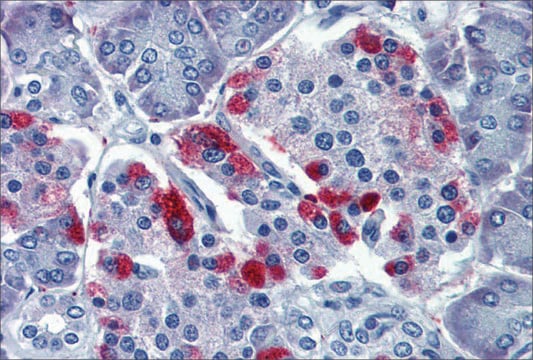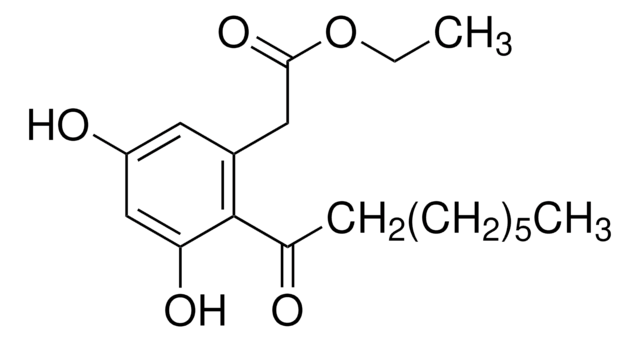SML0939
PFI-3
≥98% (HPLC)
Sinonimo/i:
(E)-1-(2-Hydroxyphenyl)-3-((1R,4R)-5-(pyridin-2-yl)-2,5-diazabicyclo[2.2.1]heptan-2-yl)prop-2-en-1-one
About This Item
Prodotti consigliati
Livello qualitativo
Saggio
≥98% (HPLC)
Forma fisica
powder
Colore
yellow to orange
Solubilità
DMSO: 10 mg/mL, clear
Temperatura di conservazione
2-8°C
Stringa SMILE
OC1=C(C(/C=C/N2[C@H](C3)CN(C4=NC=CC=C4)[C@H]3C2)=O)C=CC=C1
InChI
1S/C19H19N3O2/c23-17-6-2-1-5-16(17)18(24)8-10-21-12-15-11-14(21)13-22(15)19-7-3-4-9-20-19/h1-10,14-15,23H,11-13H2/b10-8+/t14-,15-/m1/s1
INAICWLVUAKEPB-QSTFCLMHSA-N
Categorie correlate
Azioni biochim/fisiol
To learn about other SGC chemical probes for epigenetic targets, visit sigma.com/sgc
Caratteristiche e vantaggi
Prodotti correlati
Codice della classe di stoccaggio
11 - Combustible Solids
Classe di pericolosità dell'acqua (WGK)
WGK 3
Punto d’infiammabilità (°F)
Not applicable
Punto d’infiammabilità (°C)
Not applicable
Certificati d'analisi (COA)
Cerca il Certificati d'analisi (COA) digitando il numero di lotto/batch corrispondente. I numeri di lotto o di batch sono stampati sull'etichetta dei prodotti dopo la parola ‘Lotto’ o ‘Batch’.
Possiedi già questo prodotto?
I documenti relativi ai prodotti acquistati recentemente sono disponibili nell’Archivio dei documenti.
I clienti hanno visto anche
Articoli
We offer a variety of small molecule research tools, such as transcription factor modulators, inhibitors of chromatin modifying enzymes, and agonists/antagonists for target identification and validation in gene regulation research; a selection of these research tools is shown below.
Il team dei nostri ricercatori vanta grande esperienza in tutte le aree della ricerca quali Life Science, scienza dei materiali, sintesi chimica, cromatografia, discipline analitiche, ecc..
Contatta l'Assistenza Tecnica.











